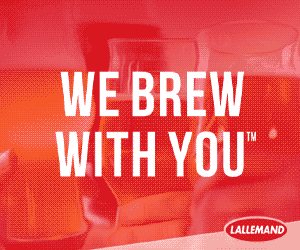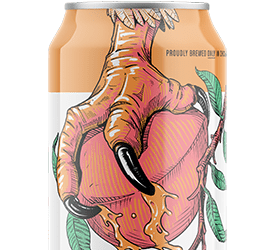Brasserie D’Orval’s Orval Trappist Ale clone
Orval Trappist Ale clone
(5 gallons/19 L, all-grain)
OG = 1.059 FG = 1.002
IBU = 33 SRM = 12 ABV = 6.2%
Orval pours orange-brown with a big, rocky head. The very spritzy levels of carbonation and lightly sour with a distinctive Brett character make the beer feel prickly on the tongue. Orval beer is distinctly dry and has little hop bitterness or flavor, although it is the only Trappist ale to be dry hopped. You’ll really taste the pale malt base, so don’t use US, German or English malts for this.
Ingredients
6.25 lbs. (2.8 kg) Belgian pale ale malt
2.5 lbs. (1.1 kg) Vienna malt (6 °L)
0.25 lbs. (0.11 kg) crystal malt (160 °L)
1.75 lbs. (0.79 kg) cane sugar
7.5 AAU Hallertau-Hersbrücker hops (60 min.) (1.9 oz./53 g of 4% alpha acids)
2.5 AAU Styrian Goldings hops (15 min.) (0.5 oz./14 g of 5% alpha acids)
0.33 oz. (9.4 g) Styrian Goldings hops (dry hops)
1/4 tsp. yeast nutrients
Wyeast 3522 (Belgian Ardennes) or White Labs WLP530 (Abbey Ale) yeast (1.5 qt./1.5 L yeast starter)
Wyeast 3526 (Brettanomyces lambicus) or White Labs WLP650 (Brettanomyces bruxellensis) yeast
1.2 cups corn sugar (for priming)
Step by Step
Heat 2.8 gallons (10.6 L) of water to 164 °F (73 °C), stir in crushed grains and mash at 153 °F (67 °C). Mash for 60 minutes then stir in boiled water to raise grain bed temperature to 168 °F (76 °C). Hold for 5 minutes. Recirculate until wort is clear, then begin running wort off to kettle. Sparge with 170 °F (77 °C) water. Boil wort for 90 minutes, adding hops at times indicated in recipe. Add sugar and yeast nutrients with 15 minutes left in boil. Cool wort and transfer to fermenter. Aerate wort and pitch beer yeast. Ferment at 70 °F (21 °C). Rack to secondary when fermentation is complete and add Brettanomyces and dry hops. Let condition for 2 months before bottling. Bottle in heavy bottles.
Orval Trappist Ale Clone
(5 gallons/19 L, partial mash)
OG = 1.059 FG = 1.002
IBU = 33 SRM = 12 ABV = 6.1%
Ingredients
1.75 lbs. (0.79 kg) Coopers Light dried malt extract
2.25 lbs. (1.0 kg) Coopers Light liquid malt extract
2 lbs. (0.91 kg) Belgian pale ale malt
13 oz. (0.37 kg) Vienna malt (6 °L)
0.25 lbs. (0.11 kg) crystal malt (160 °L)
1.75 lbs. (0.79 kg) cane sugar
7.5 AAU Hallertau-Hersbrücker hops (60 min.) (1.9 oz./53 g of 4% alpha acids)
2.5 AAU Styrian Goldings hops (15 min.) (0.5 oz./14 g of 5% alpha acids)
0.33 oz. (9.4 g) Styrian Goldings hops (dry hop)
1/4 tsp. yeast nutrients
Wyeast 3522 (Belgian Ardennes) or White Labs WLP530 (Abbey Ale) yeast (1.5 qt./1.5 L yeast starter)
Wyeast 3526 (Brettanomyces lambicus) or White Labs WLP650 (Brettanomyces bruxellensis) yeast
1.2 cups corn sugar (for priming)
Step by Step
In a large soup pot, heat 4.6 quarts (4.4 L) of water to 164 °F (73 °C). Add crushed grains to grain bag and steep around 153 °F (67 °C) for 45 minutes. While grains steep, begin heating 2.1 gallons (7.8 L) of water in your brewpot. When steep is over, remove 1.5 qts. of water from brewpot and add to the “grain tea” in steeping pot. Place a colander over your brewpot and place your steeping bag in it. Pour grain tea (with water added) through the grain bag. Heat liquid in brewpot to a boil, then stir in dried malt extract, add first charge of hops and begin the 60 minutes boil. With 15 minutes left in boil, add hops, sugar and yeast nutrients. Then turn off heat and stir in liquid malt extract. Stir well to dissolve extract, then resume heating. (Keep the boil clock running while you stir.) At the end of the boil, add last charge of hops, then cool wort and transfer to fermenter. Add water to make 5 gallons (19 L), aerate wort and pitch yeast. Ferment at 64 °F (18 °C). Rack to secondary and add Brettanomyces and dry hops. Let condition for 2 months before bottling. Bottle in heavy bottles.
Written by Chris Colby

Orval pours orange-brown with a big, rocky head. The very spritzy levels of carbonation and lightly sour with a distinctive Brett character make the beer feel prickly on the tongue. Orval beer is distinctly dry and has little hop bitterness or flavor, although it is the only Trappist ale to be dry hopped. You’ll really taste the pale malt base, so don’t use US, German or English malts for this.



